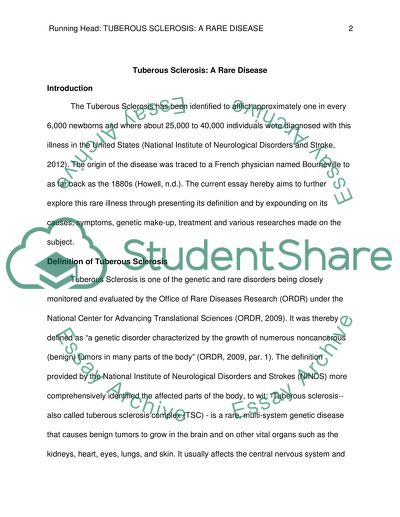Tuberous Sclerosis A Rare Disease Research Proposal. Retrieved from https://studentshare.org/biology/1455564-tuberous-sclerosis-a-rare-disease
Tuberous Sclerosis A Rare Disease Research Proposal. https://studentshare.org/biology/1455564-tuberous-sclerosis-a-rare-disease.


